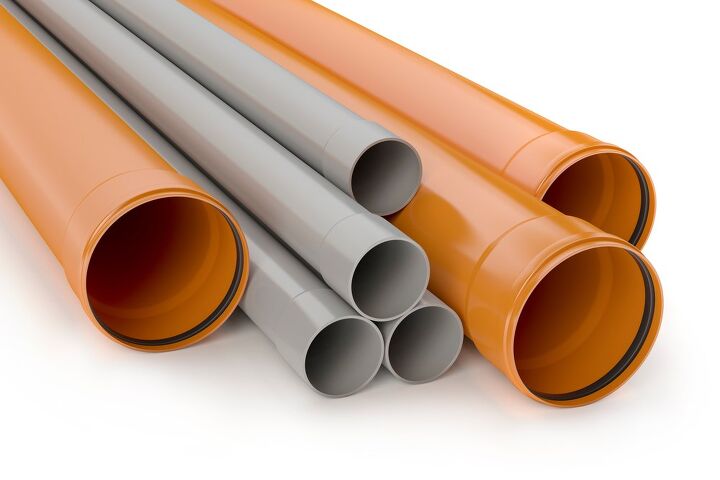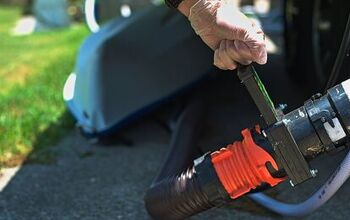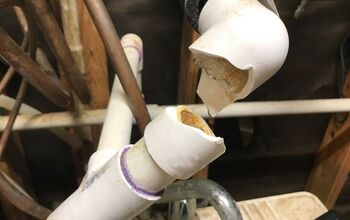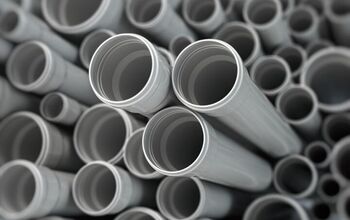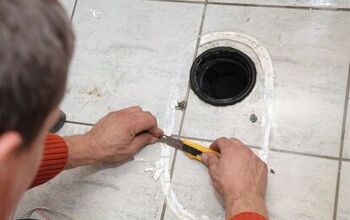What Size PVC Pipe For Pole Bending? (Find Out Now!)

PVC pipe is an extremely durable and long-lasting option for pole bending. While it’s strong and solid on the outside, it’s made of a material that’s quite malleable and bendable. These features make PVC pipe one of the best option when it comes to pole bending. However, many people wonder if you can bend all sizes of PVC.
The best PVC pipe for pole bending is pipe from 3/8″ to 1 1/2″ in diameter. The best thickness size for PVC pipe pole bending is schedule 80. There are many different sizes of PVC pipe and different densities, but these are the best for pole bending purposes.
In this article, we’re going to look at the best PVC pipe sizes and thicknesses for pole bending. We’ll also look at how to bend PVC pipe and some of the ways that bent PVC pipe is used.
Do You Need a Faucet, Fixture, or Pipe Repair or Replacement?
Get free, zero-commitment quotes from pro contractors near you.

What Size PVC Pipe for Pole Bending?
PVC pipes range in size from 3/8 inches to 24 inches. If you’re planning a project that requires you to have a bent pole or pipe, 3/8 inch PVC to 1 1/2 inch PVC pipe is your best option. You’ll also want the thinnest PVC pipe that you can get your hands on because it will bend easier. The thickness of PVC pipe ranges from schedule 20 to schedule 80, with 20 being the thickest and 80 being the thickest.
It’s possible to bend thicker PVC pipe, but it’s much more difficult and takes longer. Depending on your project, however, you might require different levels of thickness. It’s important to know what size and thickness of pipe you need for your specific project.
What are the Different Sizes of PVC Pipe?
PVC pipe has a wide range in sizes and thickness in order to accommodate any project. Electrical conduit, for example, is usually thicker than PVC pipe used in plumbing or venting. While conduit is usually schedule 20 to schedule 40 in thickness, it’s still possible to bend. It takes a little longer, but PVC pipes of this thickness, as long as they’re from 1/2 to 2″ in diameter, can be bent.
Any PVC pipes that are larger than 2″ in diameter or extremely difficult to use in pole bending. The method of bending a pole involves heating it up and using sheer force on larger pipes. It’s difficult to heat pipe larger than 2″ enough to bend it properly.
How to Bend a PVC Pipe
If you have the right size PVC pipe and need to bend it for a pole bending project, there are several ways to go about it. The best way, however, requires the use of a heat gun and safety equipment such as a mask and gloves. It’s really as easy as that. The safety equipment is important because of the high heat produced by the heat gun. You run the risk of burning yourself or damaging your eyes.
Why Use a Heat Gun?
Heat guns can be purchased for as little as $25 at most hardware and home improvement stores. There are some who attempt to use a blowdryer or a propane torch to heat the pipe, but these are both bad options. Hairdryers take way too long and don’t produce enough heat fast enough. While it might be possible, hairdryers are not the tool of choice for pole bending.
Blowtorches, on the other hand, produce too much heat in a concentrated area. A torch produces enough heat but it doesn’t disperse the heat enough for a good pole bend. Heat guns are the perfect tool for the job because they produce enough heat, but disperse it evenly across the pipe.
Heat the Pipe
Once you’ve purchased your heat gun and have it plugged into a wall outlet, it’s ready for use. You’ll want to put your gloves and mask on to protect you from the heat and fumes of the PVC pipe. Hold the pipe in one hand and the heat gun in the other and move the gun across the area you want to bend. Make sure that you hold it several inches from the pipe and move it over an 8 to 12-inch area of the pipe.
The key is to constantly keep the pipe rotating and slowly spinning it in your hand. By keeping the pipe moving, you can disperse the heat as evenly as possible. The larger in diameter that your pipe is, the longer it will take to bend the pipe. It’s possible with larger pipes, just much more difficult.
Complete the Pole Bend
As you’re heating the pipe, it will start to slowly bend in the area that you’re heating. When this happens and the pipe is nice and hot, set the pipe on the ground and finish the bend. Make sure that the pipe is laying on a flat surface and that you move quickly so that the pipe doesn’t cool off. You shouldn’t need much force to bend the pipe if it’s nice and hot. If necessary, continue to heat the pipe with one hand as you’re bending it.
Can I Kink the Pipe While I’m Bending It?
If you’re not careful, you can definitely kink your PVC pipe while performing a pole bend. If you make it too hot, you can potentially melt the pipe and it will cave in on itself. Another potential hazard with pole bending is that you don’t bend it fast enough. If you heat the pipe and lay it down to finish the bend, but don’t do it before the pipe cools, there’s a good chance that a kink will be the result.
Related Questions
Is PVC pipe pole bending difficult?
PVC pole bending isn’t difficult as long as you’re patient and have the proper tools.
Is PVC pipe dangerous?
One of the components in PVC pipes is vinyl chloride. It’s actually the main ingredient that gives PVC its bendable and durable features. However, when you heat the pipe up, vinyl chloride gets released into the atmosphere and it can be harmful if inhaled for an extended period.
Do You Need a Faucet, Fixture, or Pipe Repair or Replacement?
Get free, zero-commitment quotes from pro contractors near you.

Final Thoughts
You can use a wide variety of PVC pipe sizes for pole bending. It’s important, however, to follow the proper techniques and to follow the steps laid out above. It might also be a good idea to cut a small piece of PVC pipe and perform a practice run. PVC pole bending isn’t difficult, but a little practice never hurts so you don’t ruin your pipe.

Before I started writing, I worked for 6 plus years in the plumbing, electrical, and HVAC business. I was primarily an HVAC installer but also worked as a plumber and electrician. Now I'm a copywriter, focusing on home improvement content and guides.
More by Jalin Coblentz



